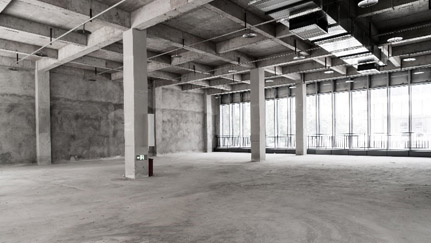Maintaining closed or idle work facilities

Keep your closed, vacant, or idle commercial buildings safe.
There can be a multitude of reasons to close or idle a facility, and this may be on a permanent or temporary basis. Reasons for vacating or idling a facility can range from financial issues, loss of tenants, business slow down, or an emergency requiring the building owner or tenant to stop operations.
Vacant vs. Idle:
A facility is vacant when it does not contain enough equipment or property to conduct customary operations. Thus, when a facility is unoccupied and has machinery, furniture, and storages/warehousing items removed – the building is considered as Vacant.
Idle is used for a facility that is dormant and not in operation, with many items remaining in the building. Thus, when a building maintains all content such as machinery, storage/warehousing, etc. but is not operating, this building is considered as Idle.
An Idle or Vacant building has significant risks for fire, water damage, freezing, vandalism, mold, crime, vagrant issues, weather related issues, and property theft. In order to help limit the risk of a loss during an idle period or vacancy, Nationwide Loss Control recommends observing the following procedures:
- Notify the Local Fire Department and emergency response teams of the building’s status.
- Notify the Property Insurance Carrier and your Insurance Agent. In addition, review your property policy with your Agent and address any issues with your policy related to a vacant or idle facility as needed.
- Notify utilities of the closing, however electrical, heat, and water needs to be maintained to prevent may cold weather and other related weather conditions from damaging the facility.
- Unnecessary utilities can be shut off such as domestic use water, water heaters, internet, cable service, etc.
- Maintain as applicable – all fire protection such as automatic sprinklers, booster and fire pumps, fire alarms such as sprinkler tamper and flow, smoke alarms, security/burglar alarms, interior and exterior lighting, and any onsite guard service.
- As applicable, remove and/or dispose of any hazardous materials, and any flammable liquids. Deep fat fryers should be drained, and the fat disposed of properly. Keep warehousing to a minimum.
- Refrigeration operations should maintain all temperature alarms and refrigeration equipment. Any fire protection in these areas, such as Dry Systems or Pre-actions systems should also continue to be maintained.
- If there is no current guard service or burglar alarm provided, consideration should be given to obtaining an onsite guard service and or a security alarm.
- Maintain in operation any needed pumps, drainage pumps, and sump pumps
- Consider suspending all mail deliveries or forward the mail to another occupied address.
- Maintenance of the building should continue. This should include inspecting the roof for leaks, any water mitigation, noting and repairing any weather-related damage, etc.
- EDP, data should continue to be backed up and stored offsite or in fire proof safes or even in a cold or hot site as applicable.
- The facility should be visited daily if the facility lacks automatic sprinklers, fire alarms, and or security/burglar alarms. If the facility has a functioning automatic sprinkler with applicable alarms, and an active security system, visitation can be done weekly.
During any visitation:
- Inspect exterior of the building for weather related damage, lighting, unauthorized entry, and vandalism
- Interior visits should include walkthrough of all areas of the building confirming that all necessary utilities are in operation, all alarms are in operation, and any fire protection remains in operation. In addition, inspect for any weather-related damage to the interior of the building, such as water, mold, freezing, etc.
- These inspections should be formal with records maintained. A check sheet should be developed with your site-specific inspection procedures and critical items to be checked related to your facility and operations.
- The exterior of the building should continue to be maintained with exterior lighting, general maintenance, grounds keeping, etc.
Conclusion:
Vacant or idle facilities are at a significantly higher risk for a property loss than a fully occupied and operational facility. By taking a strategic approach as outlined in the above steps before a facility becomes vacant, the risk of loss can be greatly reduced. Nationwide’s Loss Control Services team is available to provide solutions to help our members manage risk.
For more information on how to navigate your business through the COVID-19 pandemic, look to the following Nationwide Loss Control Services resources:
Temporary Child Daycares in Senior Living Facilities
Temporary Child Daycares in General Industries
Ergonomic Tips for Your Home Workspace
Setting Up a Temporary Restaurant Delivery Operation
COVID-19 SMART Guide for Business Owners
